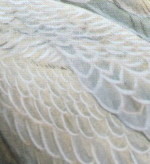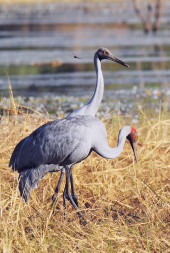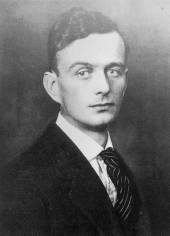New Guinea Brolgas
Brolga mysteriesThe Brolga Antigone rubicunda is the only crane known to occur in New Guinea, but our knowledge about this Brolga population is almost nil. In 1979 a complete review of all Papuan subregion ornithological literature 1915-1976 [1], included only two direct references to New Guinea Brolgas, both were brief notes announcing the first discovery in 1927 (see below). Meine and Archibald's 1996 world review of crane species [2] (‘The Cranes’) stated there was almost no knowledge on New Guinea Brolga numbers, historical trends, distribution, habitat, ecology, or existing and potential threats. Today the situation is much the same – the 2019 global Crane Conservation Strategy» was not able to add further information.
On this page, Ozcranes gives some background on New Guinea Brolgas and new plans for surveys, conservation and genetic research using moulted feathers. For an introduction to Brolgas see Australia/New Guinea Cranes Introduction», and Ozcranes Brolga FAQs».
Rare image of a pair of New Guinea Brolgas, feeding on the banks of the Bensbach River, PNG (Tim Nevard) ↓
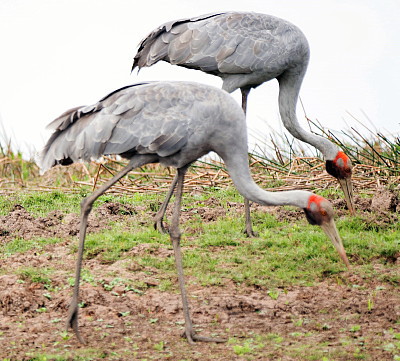
Location and habitats
Brolgas are believed to occupy lowland grassy plains and savannahs with extensive wetlands in the Transfly region of south-central New Guinea. The region has a long dry season. SE trade winds prevail May-October, with the NW Monsoon from December-March. Habitats and climate are similar to the savannahs and floodplains of Australia's Top End.
The approximate Brolga distribution is from Yos Sudarso (formerly Fredrick Hendrik) Island, Indonesia, east to the Fly River in PNG [2], a more detailed map can be found in Phil Gregory's ‘Birds of New Guinea’ [3].
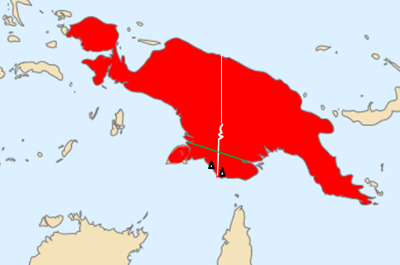
← Map showing presumed Brolga distribution (south of green line) in New Guinea. The west triangle is Merauke, Papua, Indonesia, the east triangle is Bensbach, Papua New Guinea. Brolgas have been seen flying from the tip of Cape York Peninsula over the Torres Strait, but migration between Australia and PNG is not proven. Map modified from Wikimedia, image licences are at the link.
Until about 12,000 years ago (with lower sea levels), this area connected with Australia's Top End and western Cape York around the Lake Carpentaria basin, with rivers draining into a huge shallow lake (now submerged under the Gulf of Carpentaria). An excellent map showing this historic connection with New Guinea Transfly, is at Research Gate.
The planning for a new large project between the International Crane Foundation, James Cook University and the OTDF (Ok Tedi Development Foundation) is being finalised. This follows a survey undertaken by local people along the length of the Fly River, which was completed just before the area (and transport) closed down due to Covid 19 restrictions. Once Covid restrictions allow (probably in 2021), this initial survey is to be checked with extensive fieldwork and its findings fed into the planning of local agricultural development projects. In a recent webinar jointly presented by George Archibald and Tim Nevard, now available on the ICF YouTube channel, Tim reported that the survey has extended the known Brolga distribution in the PNG Fly River catchment to twice the area previously thought.
Numbers and breeding
New Guinea Brolgas have never been formally surveyed, except for the recent (2020) ICF-Ok Tedi Development Foundation community survey (see above). In 1995, a survey of dry season waterbirds in the Tonda Wildlife Management Area (PNG: a RAMSAR site) found 6 Brolgas in August and 132 in November, all were in grassland [4]. In October 2005 crane researcher John Grant, with colleague (and pilot) Rob Heinsohn stayed a few days at Bensbach Lodge. As a reconnaissance towards possible future research, they flew an ultralite south as far as the coast, and west to the Indonesian border. They identified fewer than 100 Brolgas and no Sarus Cranes. Lodge staff had mentioned ‘large’ flocks but with no details of actual numbers and locations.
Earlier, flocks were reported to be common in the Transfly, with numbers up to 600 in 1981, but up to only 200 in later anecdotal records [5, 6]. The most recent eBird records are of 59 Brolgas at Bensbach Lodge in August 2019, and three (including an immature) on Saibai Island in March 2020. The first record (see Discovery 1927, below) stated birds had been seen at all ages, so were obviously breeding. Breeding at Tonda Wildlife Management Area (PNG) is said to occur in May-June, just after the wet season, Brolgas then disperse during the dry season, and return in November when other wetlands dry out [4].
↓ Grassland and savannah wetlands near Bensbach, Transfly, Papua New Guinea (Iain Taylor)
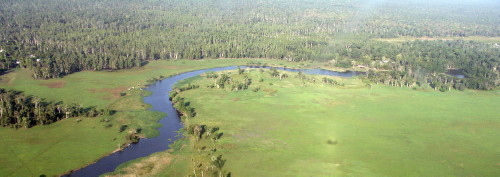
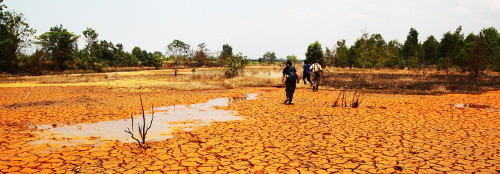
↑ Dry season swamp near Merauke, Papua, Indonesia (Degi)
Migration?
Very small numbers of Brolgas sometimes fly over Torres Strait [7]: does this mean they migrate between Australia and New Guinea? Many thousands of Australian waterbirds – including egrets, ibis, pelicans, and ducks – do move between northern Australia and the Transfly region, depending on wetland conditions [8]. These waterbirds are nomadic or dispersive, and breed opportunistically where rainfall and food resources are available.
Crane ecology (including for Brolgas) is different. They tend to be faithful to breeding areas, and even exact nesting positions, and it's unlikely Brolgas would alternate between the two countries to breed. But interbreeding could occur if Brolgas cross Torres Strait in the dry season, and unpaired birds partner with local Brolgas and remain to nest. In theory movements are quite possible. The Torres Strait is only 150km wide at its narrowest, and from (say) Thursday Island to Bensbach is 220km, and Merauke, 300km. This is far shorter than the route flown by Gulf Brolgas and Sarus Cranes who travel some 600km to spend the dry season on the Atherton Tablelands.
New research: genetics and conservation
Can genetic analysis of moulted feathers solve the Brolga migration mystery? During 2019 Tim Nevard and renowned veteran crane conservationist Dr George Archibald plan to begin a long term project to explore (1) New Guinea Brolga genetics using moulted feathers, and (2) Brolga conservation issues. The genetic study will be similar to Tim's previous work on Gulf-Tablelands crane migration. Conservation could be a major issue for New Guinea Brolgas, witih recent (July 2019) reports of many hundreds of cranes killed by rice farmers near Merauke. Watch Ozcranes News updates for more on this work as it develops.
Discovery, 1927
New Guinea Brolgas were first known to science in 1927, when ornithologist Erwin Stresemann (see Sidebar) visited Merauke [9]. In a small collection of bird skins created by resident Dr Franz Thierfelder during 1925-26, Stresemann recognised a Brolga. Here are his published notes on the discovery:
A crane from New Guinea. Among a small collection of bird skins...there is an example of Megalornis rubicundus... So far, this crane was only known from Australia. The specimen shot in the area of Merauke has moulted all flight feathers; I believe that it may be inferred that Megalornis rubicundus is one of the breeding birds of New Guinea, whose extensive grass-swamps may in some circumstances afford it favourable conditions of existence. It is strange that such a conspicuous bird escaped the attention of all former travellers who searched New Guinea.
On the occurrence of the Australian crane on New Guinea (see 0. MB 1927, p. 45), Prof. Thierfelder tells me in addition that Megalornis rubicunda is not uncommon in the hinterland of Merauke and no doubt nests there in the marshy lowlands, the birds have been found at all ages. This crane especially lives on the upper reaches of the Kumbe River; it keeps to the proximity of human settlements.
In 1941, Ernst Mayr [10] reported that Brolgas also occurred in north eastern New Guinea, in the Middle Sepik. His source was Fr. Franz Kirschbaum, a missionary and explorer who from 1913 to 1939 lived at Marienberg on the Lower Sepik. There are extensive floodplain swamps in the Lower Sepik, but later writers believe the sighting was most likely a White-faced Heron, known as a ‘blue crane’ in rural Australia.
Links
Especial thanks to Tim Nevard for his New Guinea Brolga image at the head of this page. Links to online images and calls:
- Excellent image of Brolga at Bensbach, PNG (Barra Imaging)
- A small flock of Brolgas in Wasur National Park, Papua (Macaulay Library)
- Listen to New Guinea Brolga calls on xeno-xanto
References
[1] CB Frith (1979) Ornithological literature of the Papuan subregion, 1915 to 1976 : an annotated bibliography. AMNH Bulletin 164:3
[2] CD Meine and GW Archibald (eds), 1996. The Cranes: Status survey and conservation action plan. IUCN, Gland, Switzerland, and Cambridge, UK.
[3] Gregory, Phil (2017). Birds of New Guinea : including Bismarck Archipelago and Bougainville. Barcelona : Lynx Edicions
[4] Milton, D. A. 1998. An assessment of the importance of the Tonda Wetlands in south western Papua New Guinea to shorebirds and waterbirds. The Stilt 33: 27-31.
[5] Coates, Brian J (1985). The birds of Papua New Guinea, including the Bismarck Archipelago and Bougainville. Dove, Alderley, Qld
[6] Beehler, Bruce McP, Pratt, Thane K and Zimmerman, Dale A. (1985). Birds of New Guinea. Australia and New Zealand Book Co, Sydney
[7] Draffan, RDW, ST Garnett and GJ Malone. 1983. Birds of the Torres Strait: an annotated list and biogeographical analysis. Emu 83: 207-234.
[8] SA Halse, GB Pearson, RP Jaensch, P Kulmoi, P Gregory, WR Kay and AW Storey, 1996. Waterbird surveys of the Middle Fly River floodplain, Papua New Guinea. Wildlife Research 23(5) 557-569
[9] E Stresemann (1927). A crane from New Guinea. Orn. Membr. Vol 35 p45. AND On the occurrence of the Australian crane in New Guinea. Orn. Membr. Vol 353 p87
[10] E Mayr (1941). List of New Guinea birds: a systematic and faunal list of the birds of New Guinea and adjacent islands. American Museum of Natural History, New York
« Back to Brolga & Sarus Crane Introduction

